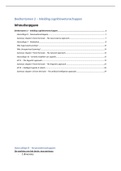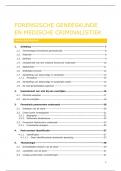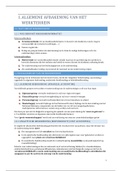Summary
Uitgebreide samenvatting Deeltentamen 2 Inleiding Cognitiewetenschap (hoorcolleges + boek)
- Course
- Institution
- Book
Ik heb een uitgebreide samenvatting gemaakt van alle stof die je moet kennen voor het deeltentamen 2 van Inleiding tot de Cognitiewetenschap. Zowel de hoorcolleges als de stof uit het boek wordt behandeld.
[Show more]






